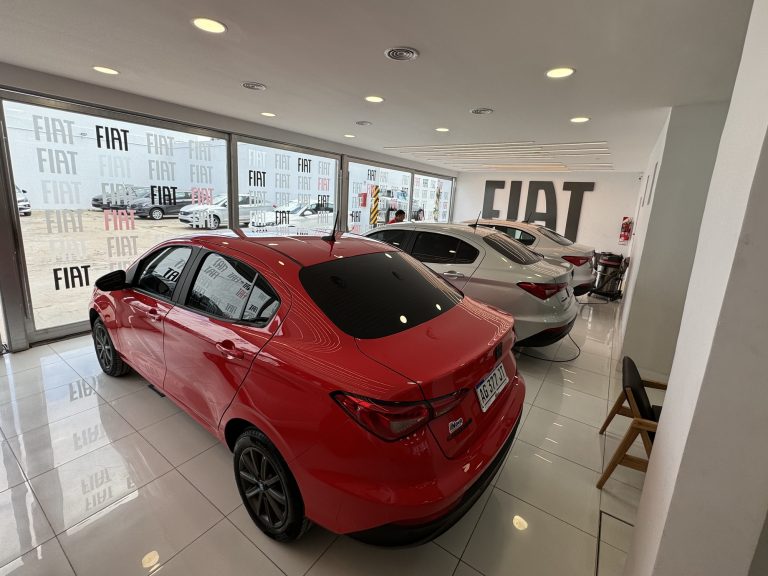
Choosing the right vehicle fleet for your business is a big decision. It affects your budget, operations, and how your team performs daily tasks. The right fleet can help your business grow and serve customers better.
If you’re unsure where to begin, this guide breaks down the key things to consider. From size to fuel type, each factor plays a role.
Let’s explore how to find the best fit for your business needs.
Understand Your Business Goals
Before selecting any vehicles, think about your main goals. Do you need to deliver goods, transport people, or offer mobile services?
Your fleet should support those tasks. A mismatch can lead to wasted money and effort. Keep your daily operations in mind. That way, your vehicle fleet becomes a smart tool, not a problem.
Think About Vehicle Types and Sizes
Different tasks need different types of vehicles. A small delivery business may not need large trucks. If you often carry heavy tools, vans may work better.
Picking the right size helps avoid fuel waste and parking issues. It also makes your team’s job easier. A good fit supports better performance every day.
Look at Fuel Efficiency and Running Costs
Fuel and maintenance costs can affect your profit. Choose vehicles that are known to use less fuel. These can save money in the long run.
Also, check how much it costs to repair or service each type. Keeping running costs low helps your business stay stable. Over time, small savings add up.
Plan for Long-Term Use and Growth
Your business might grow, so your fleet should adjust with it. Choose vehicles that can serve you now and later. Avoid choosing only for today’s needs.
Think about future routes, larger orders, or more staff. Planning ahead can prevent costly changes later. A flexible vehicle fleet supports steady growth.
Check Licensing and Legal Requirements
Different vehicles come with different rules. Some may need special licenses or checks. Make sure your drivers are ready and trained.
Staying legal keeps your team and business safe. It also avoids delays and fines. When commercial vehicles are involved, rules can be strict, so be ready.
Review Insurance and Safety Features
Insurance for business vehicles can cost a lot. Look at how each vehicle affects your rates. Also, consider safety features like backup cameras or sensors.
These reduce accidents and help your team stay safe. Good safety can also lower insurance costs. A safe vehicle fleet protects both people and property.
Match Vehicles to Daily Routes
Think about where your vehicles go each day. Short city trips need different vehicles than long highway drives. Small, easy-to-park vehicles are better in crowded areas. Long routes need strong and fuel-efficient options.
Matching vehicles to routes saves time and fuel. It also helps reduce wear and tear. Using the wrong vehicle for the job may lead to breakdowns.
Route type affects how long vehicles last. A proper match keeps drivers comfortable and efficient.
Consider Climate and Road Conditions
Your local weather and roads matter. Rough or muddy roads need tougher vehicles. Cold areas may need special tires or heating features. In hot places, air conditioning is a must.
Choosing the right setup improves comfort and safety. Your vehicle fleet should handle your area’s conditions with ease.
Wet weather may require extra safety tools like anti-lock brakes. Dusty places may need extra filters. Adapting to local conditions helps protect both vehicles and drivers.
Assess Load and Cargo Needs
What you carry matters when choosing your fleet. Heavy loads need strong engines and firm suspension. Light cargo needs less power and more space. Secure storage is also important for tools or goods.
Make sure each vehicle can safely carry its load. A good match prevents damage and keeps things running smoothly.
Overloaded vehicles wear out faster and cost more to maintain. Loading and unloading must also be easy. The right design saves time and keeps cargo safe.
Think About Branding and Appearance
Your vehicles are seen by many people. They reflect your business image on the road. Clean, modern vehicles help build trust. Bright colors or signs make your fleet stand out.
A neat vehicle fleet can be a moving advertisement. Appearance matters more than most people think. Scratched or dirty vehicles send the wrong message. First impressions often happen on the road. Make sure your fleet always looks professional.
Factor in Driver Comfort and Ease of Use
Happy drivers work better and safer. Choose vehicles with comfy seats and clear controls. Easy-to-drive models reduce mistakes and stress. Good visibility and space also help. Drivers spend hours inside, so comfort is key.
A comfortable vehicle fleet supports good morale and performance. Tired drivers make more errors. Less strain also lowers the risk of injury. Taking care of drivers helps your whole business.
Explore Leasing vs. Buying Options
You don’t always have to buy your fleet. Leasing can lower upfront costs. It also helps with upgrades later. Buying gives full control and may save money long-term. Look at your budget and goals before deciding.
Both options have pros and cons for your vehicle fleet. Leasing may include repairs or services. Buying gives ownership and freedom to customize. Weigh the short-term and long-term benefits carefully.
Evaluate Maintenance and Downtime Needs
Every vehicle needs care to stay in good shape. Some models need more frequent repairs or check-ups. Choose ones that are easy to service and have available parts.
Less downtime means more time on the road and fewer delays. Regular maintenance also keeps your team safe and avoids surprise costs. A well-maintained vehicle fleet helps your business stay reliable.
Consider the Total Cost of Ownership
When selecting a vehicle fleet, it’s important to think beyond the initial purchase price. Maintenance, insurance, fuel, and repairs can add up over time. Be sure to calculate the full cost of owning each vehicle.
While a cheaper vehicle might seem like a good deal, higher long-term costs could make it more expensive. Factor in how long you plan to keep each vehicle. This gives you a clearer idea of the true cost over its lifespan.
Choose the Right Vehicle Fleet for Your Business Needs
The right vehicle fleet supports your business goals and helps you run smoothly. When you pick the best type, size, and features, you save time and money. Focus on safety, costs, and future needs.
Take your time and plan well. That way, your fleet becomes an asset, not a burden. Let smart choices drive your business forward.
Dive deeper – our blog is packed with more valuable topics.






